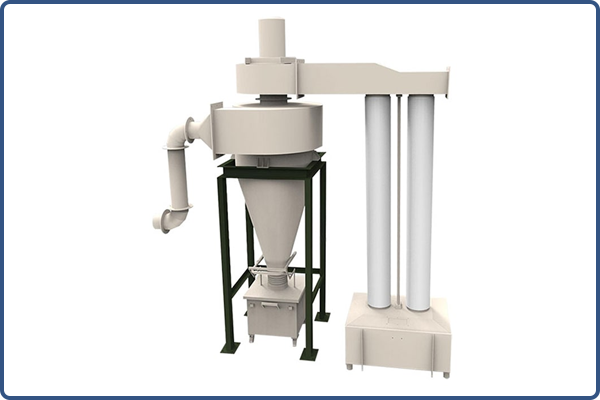
Cyclone
In cyclone dust collection, air (or other gas) laden with particulate is made to spin (vortex) inside a conical chamber. Centrifugal force causes particulate to move to the walls of the chamber where it gains inertia. Gravity pulls the particulate into a hopper for dust collection. This is called cyclonic separation. Some cyclones use a ground plate to reverse the vortex and increase efficiency. A cyclone-based dust collection system requires little maintenance because it has no filters to replace and no moving parts except for the blower.
Cyclones are often used upstream of filters as a pre-treatment, to remove the majority of dust and extend the service life of filters. Cyclonic dust collectors have other advantages over filter media. Filters often do not allow collected particulates to be recovered for reuse. Also, installed before a bag house on high heat processes, a cyclone can act as a spark arrestor. Finally, unlike filters, cyclone dust collection actually works more efficiently as humidity increases.